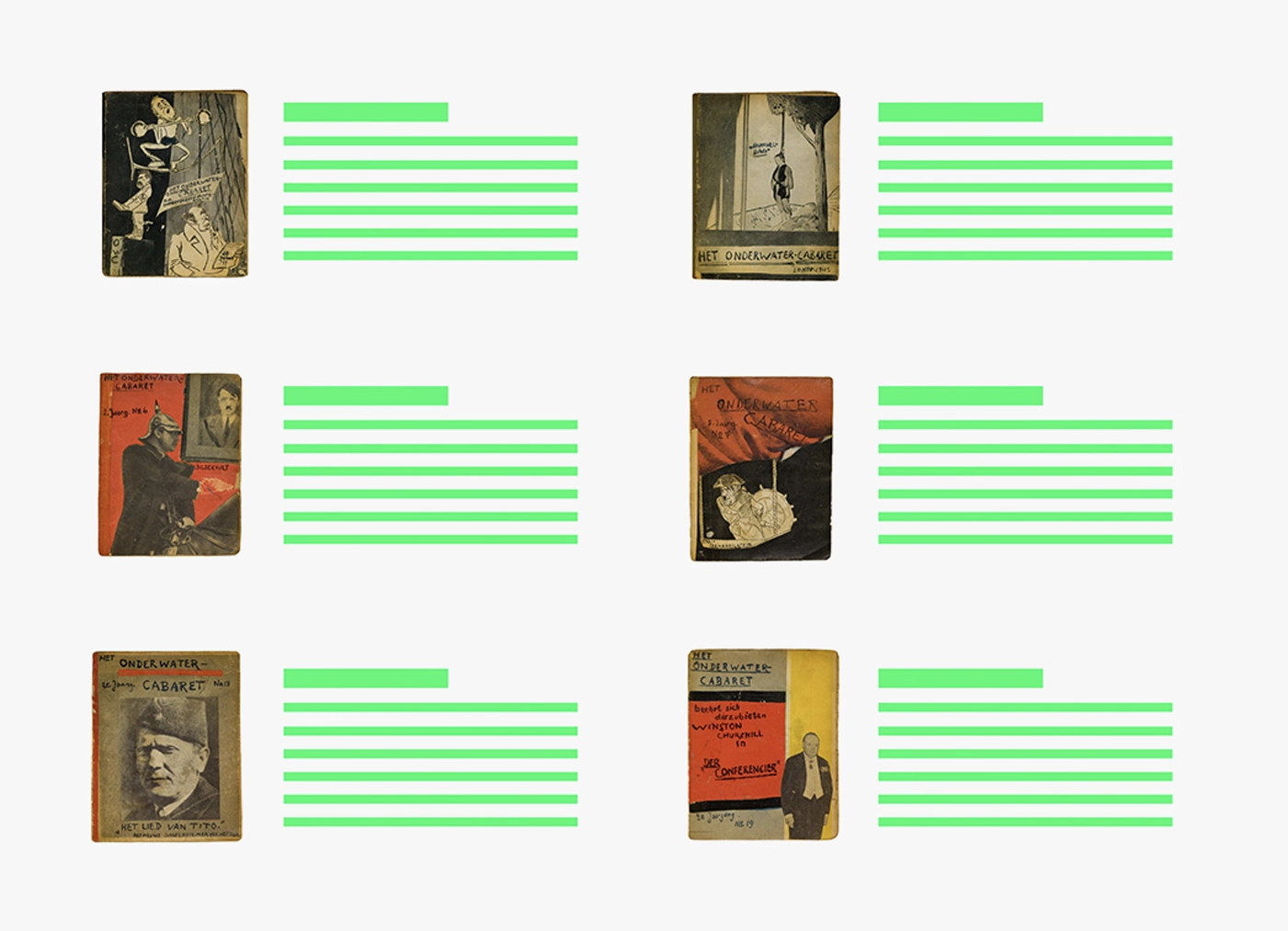


March 31, 1945
In the poem “Paschen 1945” (Easter 1945), Bloch laments the lack of eggs during this Easter celebration. Eggs are now only known from memories of better times. The majority of the Dutch people are now suffering from hunger, and the country has been plundered. However, Curt Bloch is certain that the “resurrection” will come soon and the enslavement of the Dutch population will end.
The Dutch poem “De paaschhaas bij de waarzegster” (The Easter Bunny at the Fortune Teller) tells a story of a special encounter. The frustrated Easter Bunny visits a fortune teller to have his future predicted. He feels useless at the moment because he can’t bring Easter eggs to people and fears he might be slaughtered soon. But the fortune teller reassures him: Hell won’t last much longer, and next year the bunny will have plenty to do.
The German verse “Come and See!” refers to an English-language advertisement by the German Wehrmacht. In the ad, General Eisenhower is invited to see for himself the civilian victims of the Russian army in the area of Stuhlweissenburg, Hungary. Bloch sees this as an attempt to discredit the Russian troops in front of the US Army, to curry favor with Eisenhower, and to divert attention from the atrocities committed by the Germans.
“Exemplarisch-edelarisch” is a German poem that refers to the mission of the Rhine bridge near Remagen and the personal consequences for five officers. These officers are executed by firing squad a few weeks before the end of the war because they failed in their duty to blow up the bridge in time before the approaching enemy.
In the Dutch poem “Lente” (Spring), Bloch describes his current sensory impressions: the sky turning bluer, crocuses blooming, birds singing. However, at the same time, smoke rises near Wesel, aircraft from the American troops make noise, and sirens wail. “This is not the true spring,” Curt Bloch remarks. He hopes to celebrate the season soon in freedom.